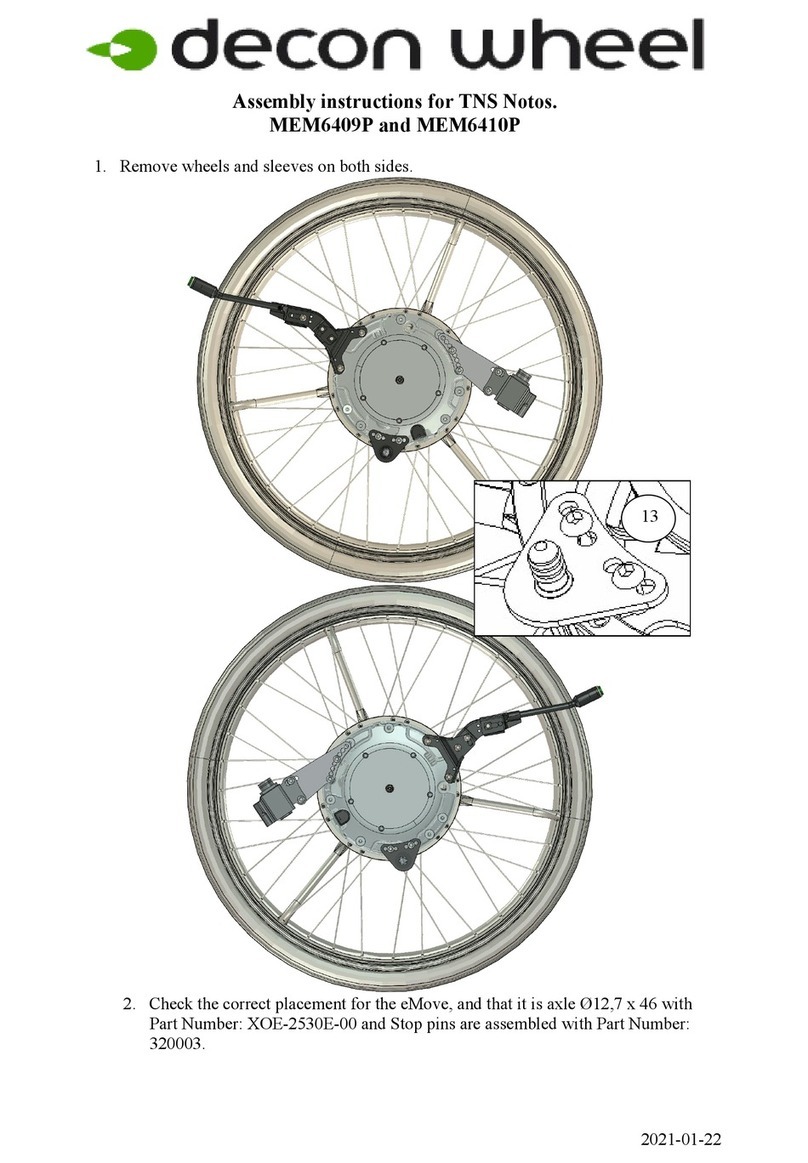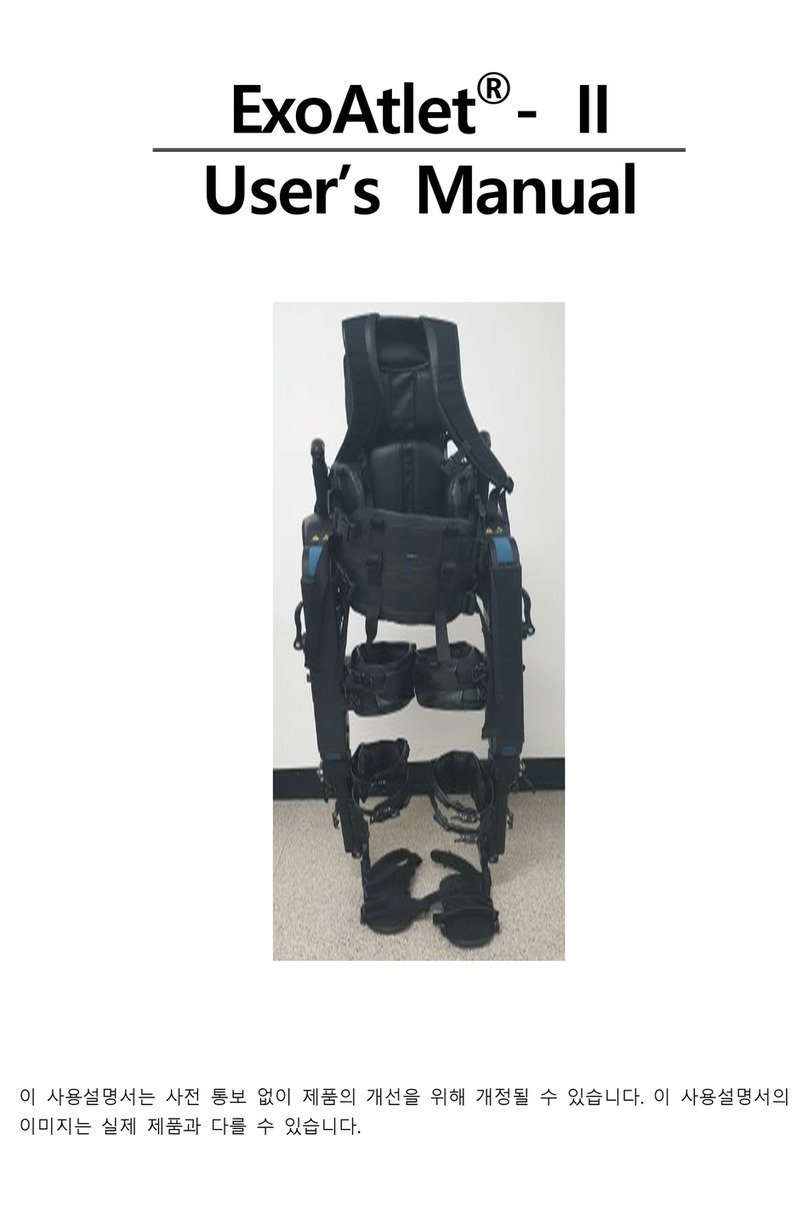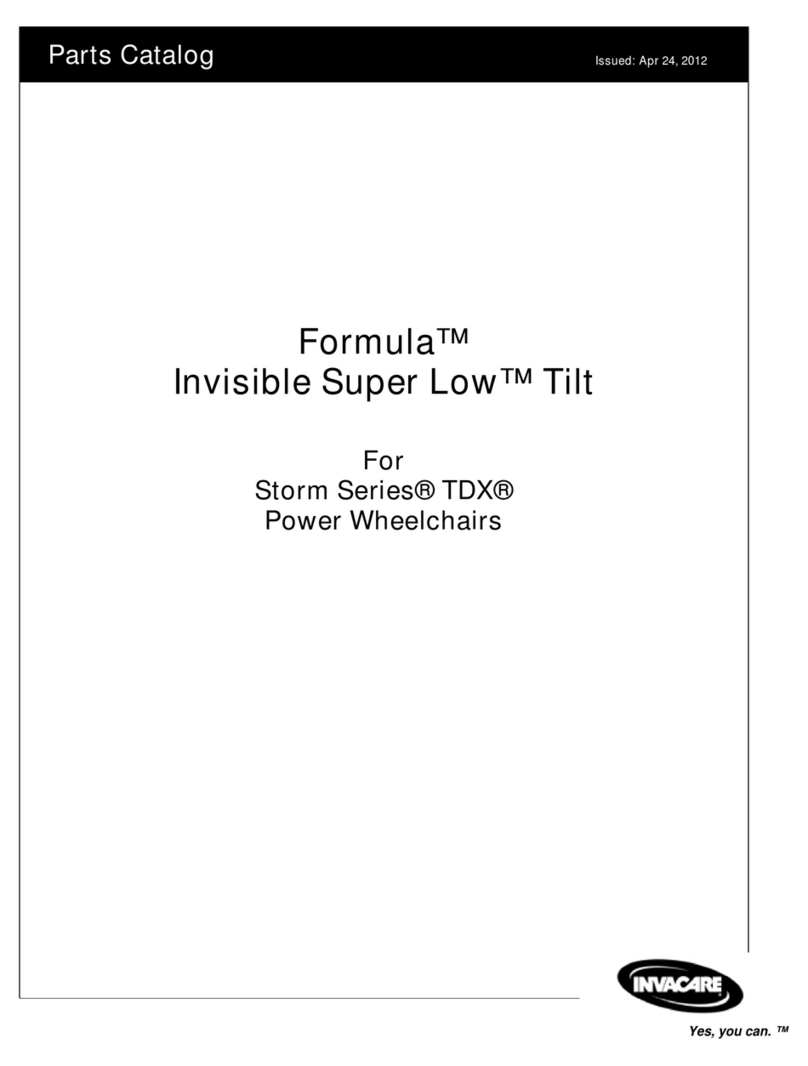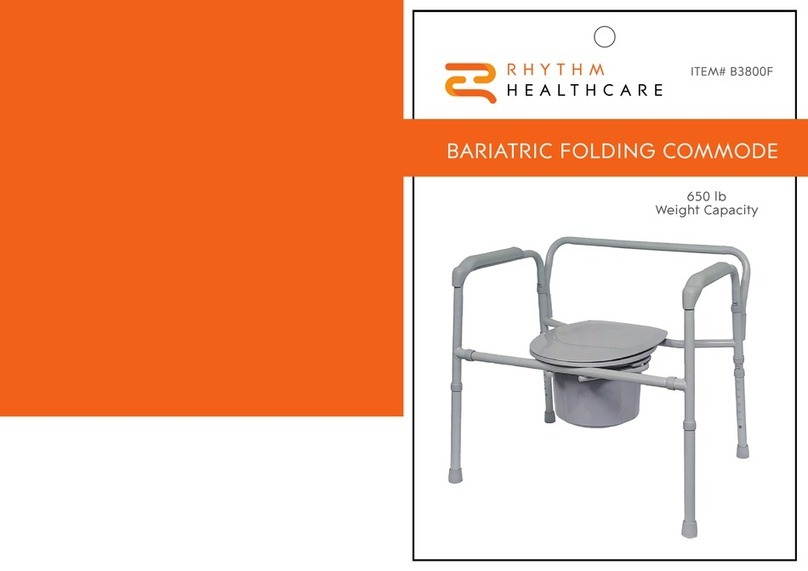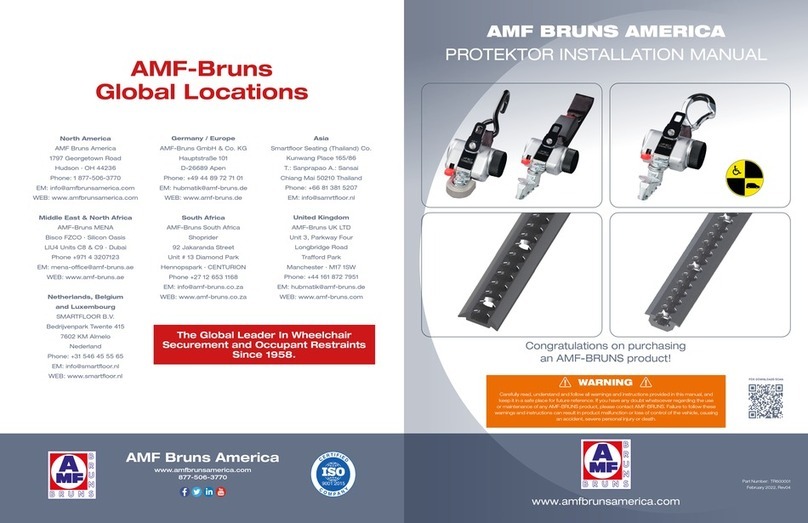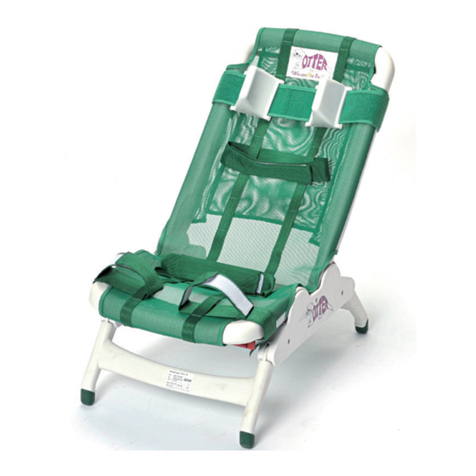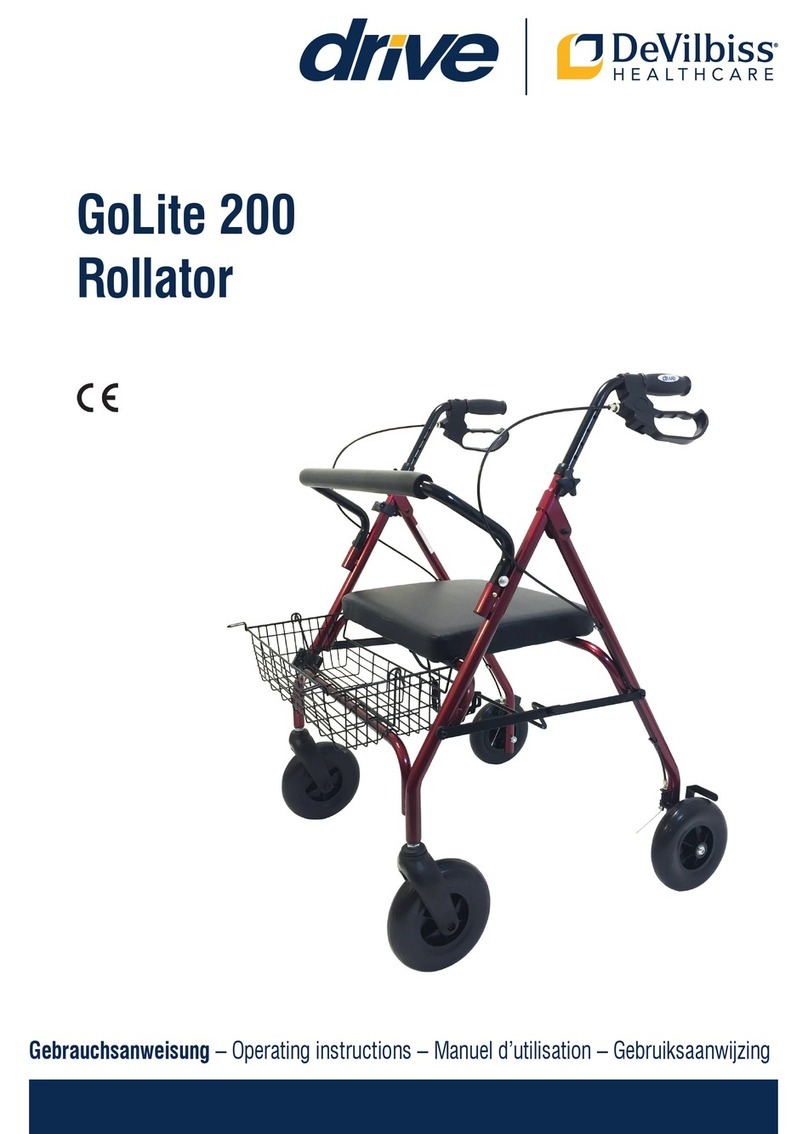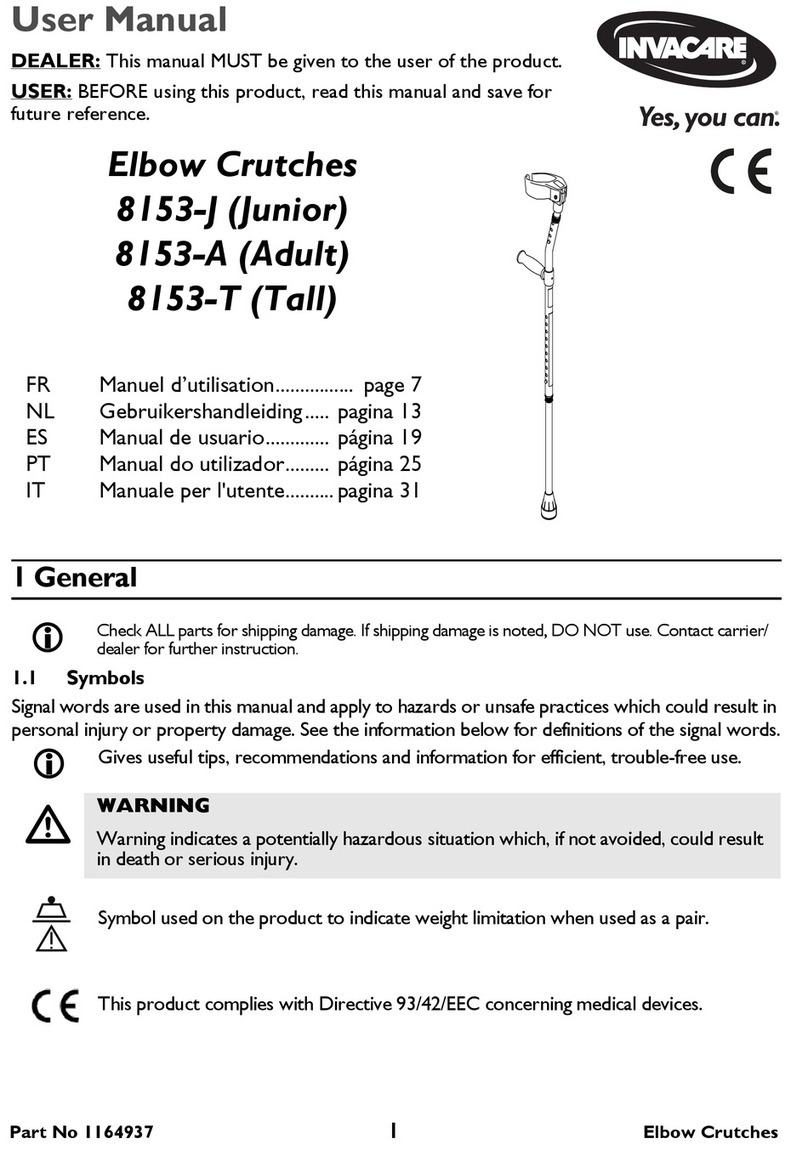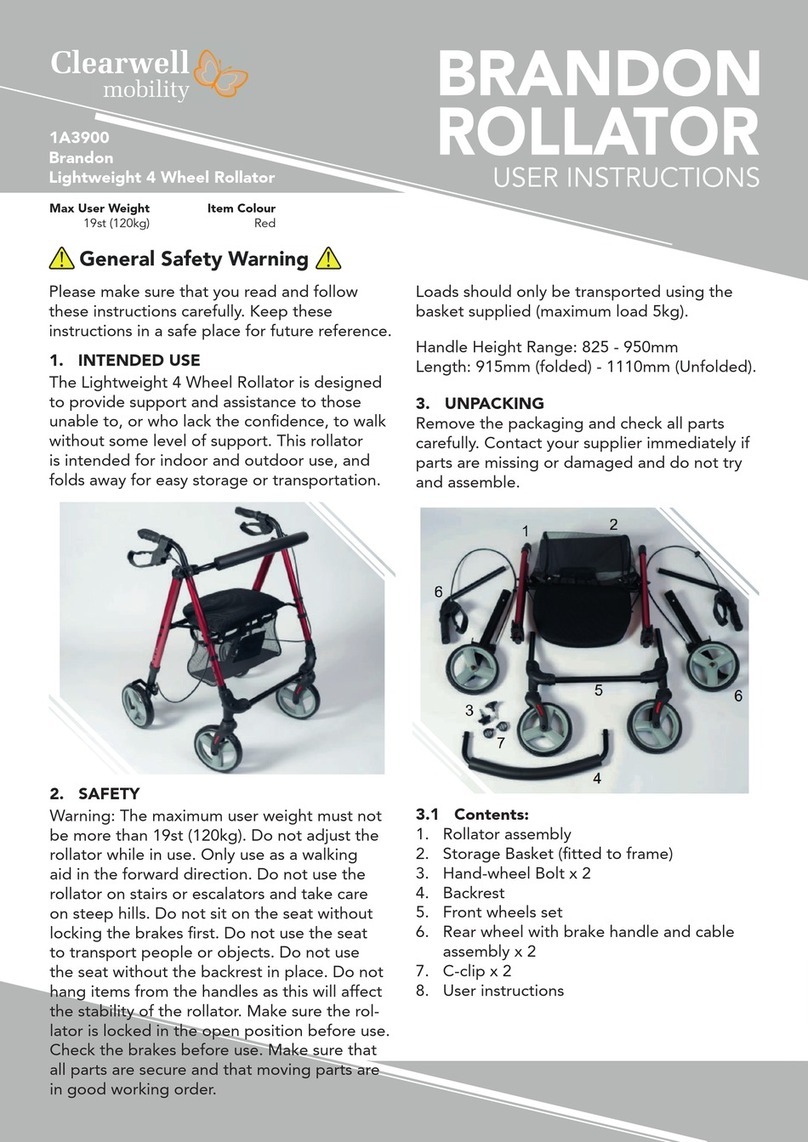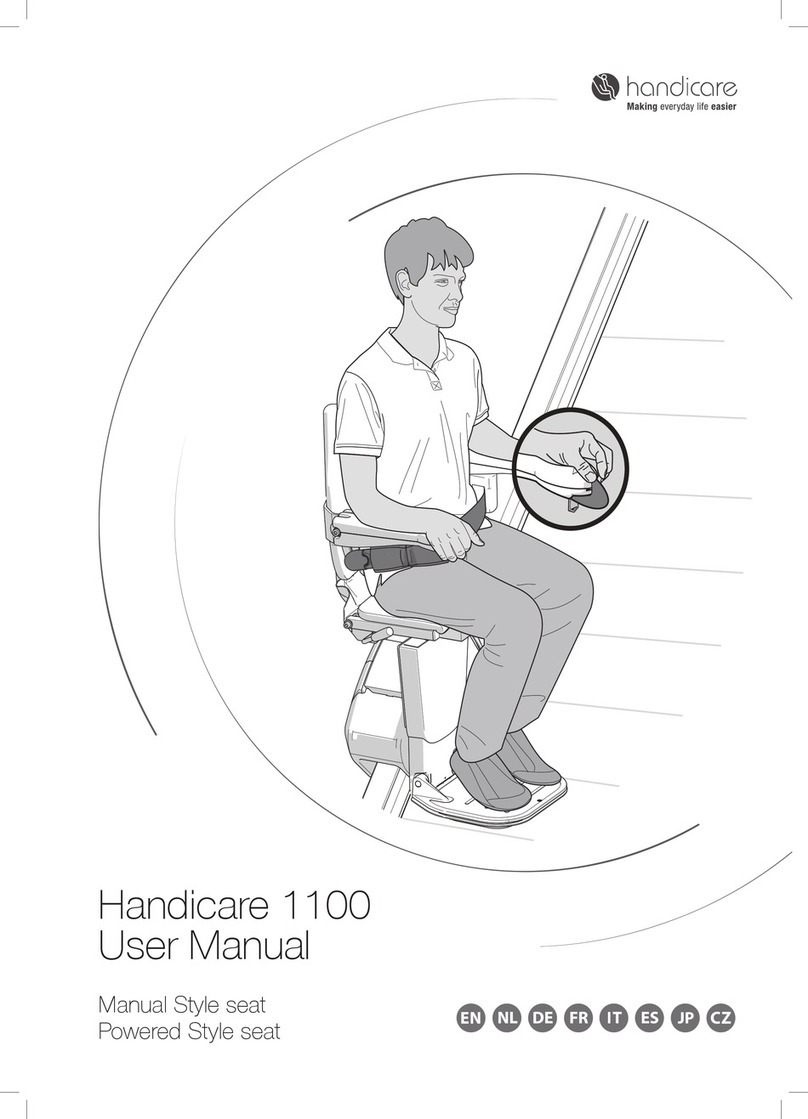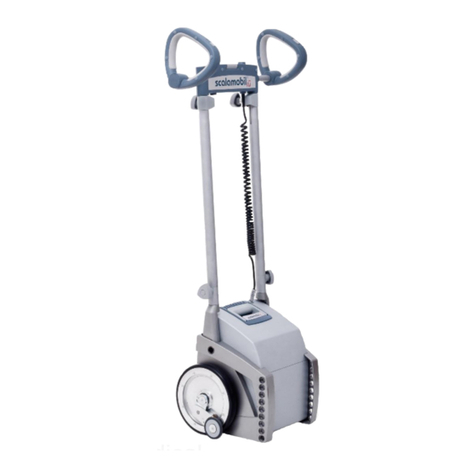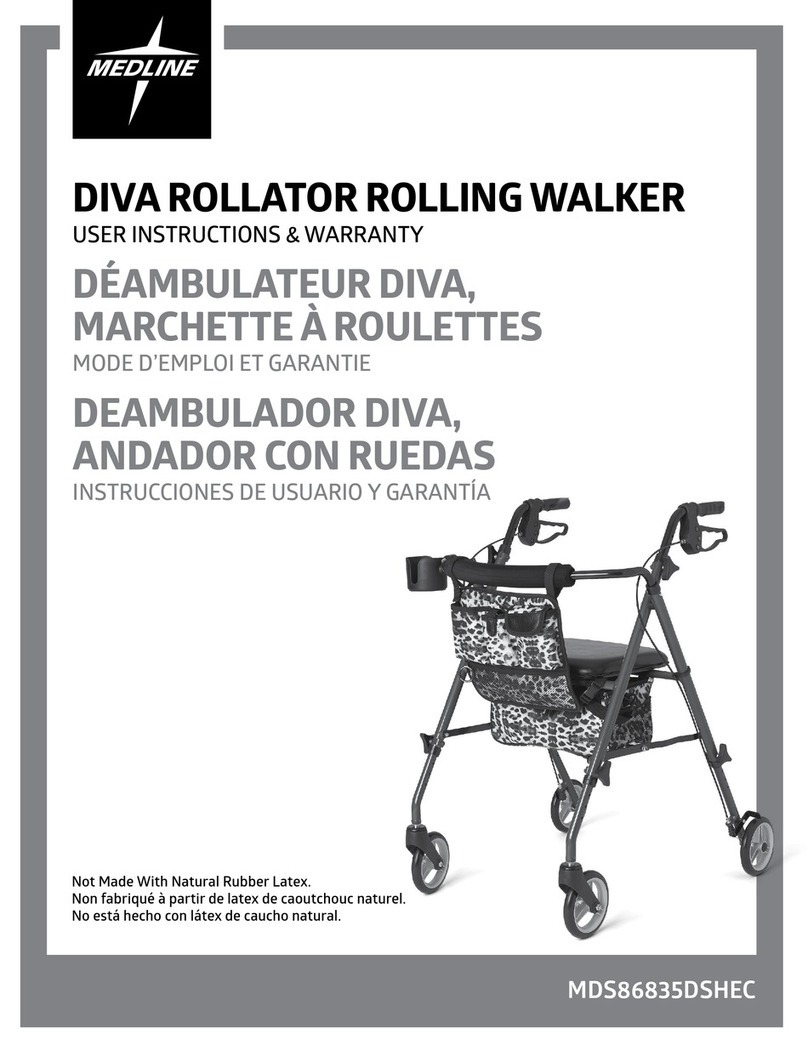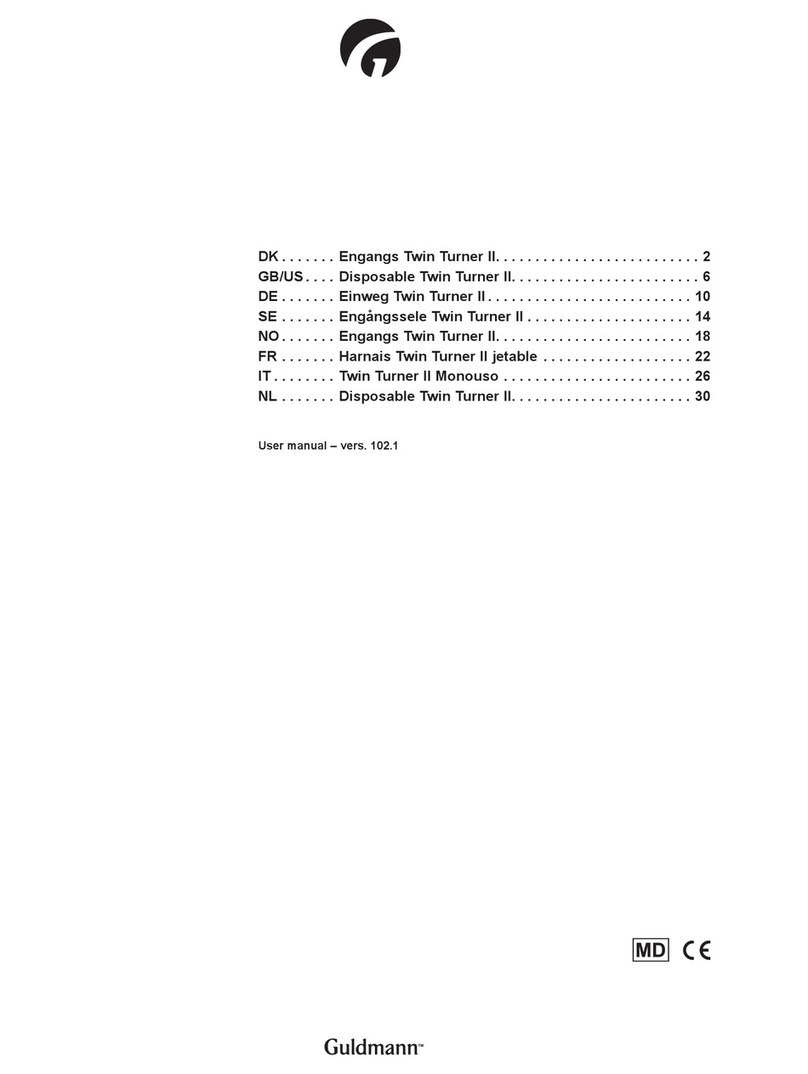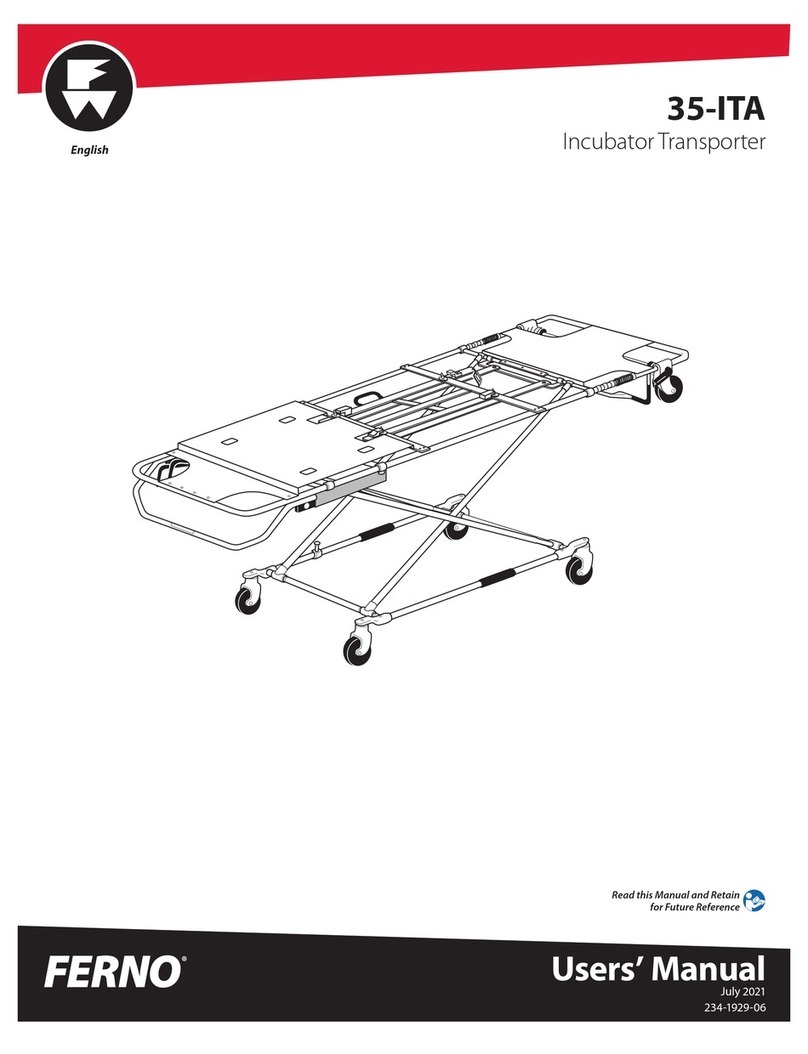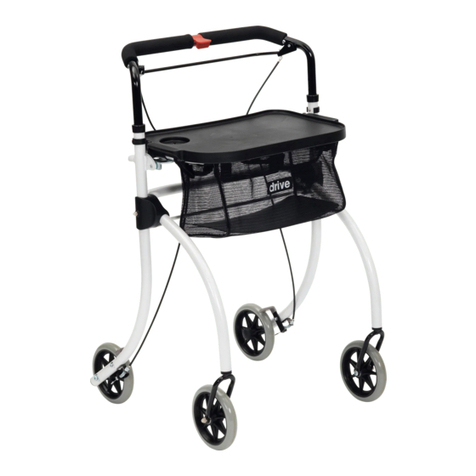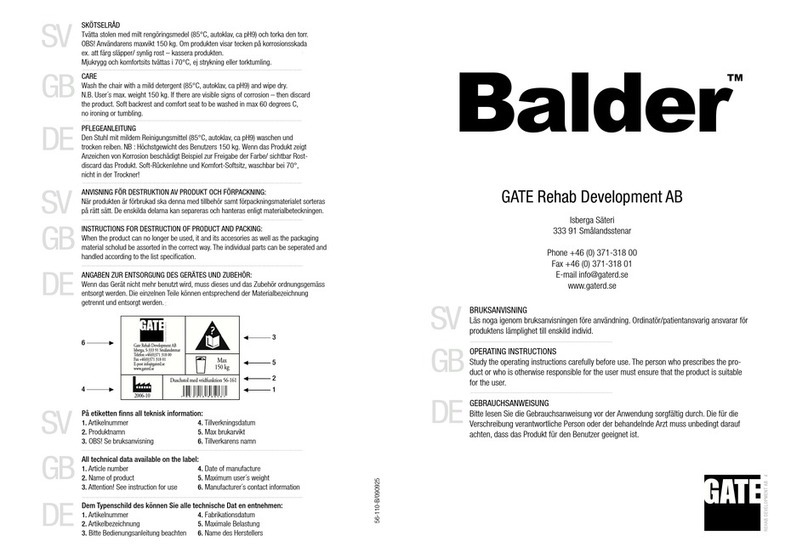87 4
6. Initial assembly of optional accessories
6.1/6.2 Abduction accessories
6.3 Support harness
6.1
6.2
If an abduction pommel is fitted to the
Trekker or Tiny Trekker it will be necessary
to locate this into position using the
plunger hand-wheel which will locate into
the hole on the hip rail. The hand-wheel
can then be tightened to secure the
abduction pommel.
If a foot abductor is to fitted to the Trekker
or Tiny Trekker, slide the foot abductor
onto the mounting. Fit the retaining pin
which can be pushing into place and then
rotated to lock.
Fitting of Abduction Pommel
Assembly
Fitting of Foot Abductor
Assembly
STEP
1
STEP
2
Supplied New: Clip the support harness
onto the chest rail as shown. Adjust the
harness using the traps to suit the user.
Retrofit: First remove the chest rail of the
Trekker from the frame’s upright tubes.
Slide one support harness bracket on
each side of the chest rail towards the
closed end of the rail.
Re-insert the chest rail into the frame.
Repeat the procedure with the two
remaining harness brackets. Align the
brackets and tighten the white hand-
wheels. You can now clip on the support
harness.
The harness must be used in-
conjunction with the chest and hip
supports.
This accessory is to be used as a
support only. It is not intended as a seat.
Fitting of Support Harness Support Harness.. continued
7. Adjustments continued
7.6 Hand rail adjustment
The height and the extension of the hand rail are in part, dependent on one another due
to the angles of inclination of the tubing involved. It is therefore, it is advisable to adjust
both height and extension simultaneously.
To do this release the hand-wheels “B” and “C” and position the hand rail such that the
patient can grip it comfortably. Elbows should normally be straight and the bar approximately
level with the top of the chest support. Re-tighten the hand-wheels.
8. User Transfer & Stability
Once fully adjusted,before transferring the user, ensure that all supportive components
are fully secure and that the front wheels are locked. Fine-tuning of hand rail length and
height, as well as chest support height, may be adjusted after transfer with some practise
as long as the user is fully supported during this process. This equipment must be used
under supervision at all times!
In a few cases, it may be found that these adjustments allow the patient to be positioned
only a short distance ahead of the rear wheels. Additionally, some patients will present with
uncontrolled jerking movements which can threaten to tilt the frame backwards. In such
cases the Trekker and Tiny Trekker should not be used.
Similarly, carers should be aware that in exceptional cases the transverse stability of the
frame can also be threatened by vigorous uncontrolled movements, particularly where the
patient’s height is at or near the maximum recommended. In such cases the Trekker and
Tiny Trekker should not be used.
9. Folding & Storage
The Trekker and Tiny Trekker can be folded by reversing the un-folding procedure. Note
that poppers can be released by pinching them into the tube. When folded the Trekker
and Tiny Trekker can be locked in place by tightening the hand-wheel with the yellow
dot.
Please adhere to best manual handling practice whilst transferring, folding, un-folding and
lifting the Trekker and Tiny Trekker.
Hand rail adjustment
Hand-wheel B
Hand-wheel C
